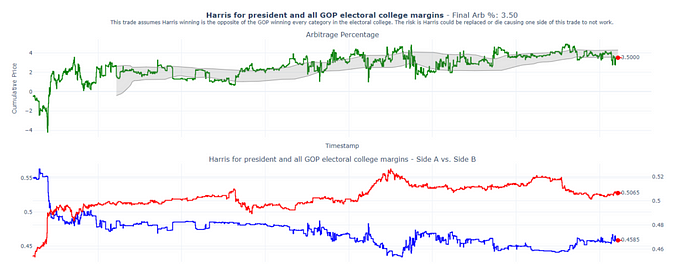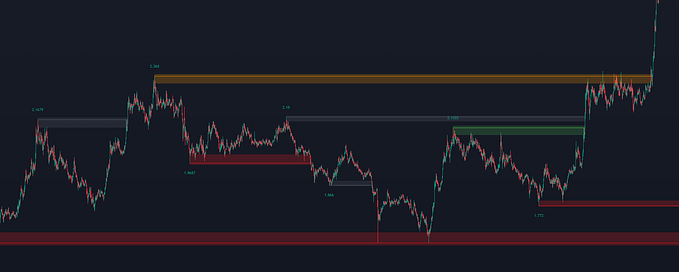A Decentralized P2P Invoice factoring marketplace
AfterPay is the Australian success story of this year. It positions itself as a “Buy now, pay later scheme”.
Several online and offline sellers offer AfterPay as a solution for its buyers. Shoppers can use AfterPay to buy items up to $1000 and typically have to pay nothing upfront. They then pay the amount in 4 equal instalments, each being paid every 2 weeks.
There is no interest.
Which means that AfterPay is not deemed as a lender and no credit license is needed. AfterPay instead charges around 6% to the sellers. There are some late fees if the buyers don’t shell up on time. A 6% commission + late fees translate to a return of around 40% annualized (52 weeks) to AfterPay.
Pretty sweet deal.
AfterPay has revolutionized retail by bringing new buyers through reduction of friction as part of the shopping experience. Cant afford it now, no worries! AfterPay it. Sales have increased which makes the retailers happy as well.
In fact AfterPay can be best understood not as a “Buy now, pay later” scheme but an invoice factoring provider. Their customer is not the shopper, it is the merchant.
For those who do not know invoice factoring is a short term financing solution used by a lot of businesses to address cash flow issues. Often businesses will have good blue chip clients and contracts in place. But invoices will have terms like 30 or 60 days (or more). From the time the business incurs the expense to provide the service to the time they get paid, the business is running cash negative.
For an undercapitalized business this can be fatal, especially if their payables come due before they have enough cash.
To resolve this a number of financial institutions have come up with a short term funding solution called invoice factoring. A business with a quality invoice can get an upfront payment with a bit of a discount (70–90%) of total value. The finance company claims the receivable and then gets paid out when the invoice is paid.

Invoice factoring provides a lucrative return for the financial institution and it also resolves the cash flow issues for the business.
What AfterPay are really providing is an invoice factoring service where a merchant can come to them with the invoice for their sales and get paid out and then AfterPay collects the payments from the buyer.
It is classic invoice factoring with a very low factor rate of 6%.
However there are some key differences and improvements which puts it in a completely different league.
- Typically merchants approach invoice factoring financial institutions after the sale has been made and an invoice is issued. AfterPay inverts this process where the factoring service is positioned as part of the sales process. Not having to pay upfront is a big eliminator of friction for buyers and it helps boost the sale and the creation of an invoice. Using AfterPay creates more sales, hence more invoices and hence more business for AfterPay. It is a virtuous loop.
- Typically invoice factoring operates in the B2B space. There is a lot of due diligence that happens on invoices, they are rated and benchmarked and the work that goes in means that in order for it to be worthwhile the invoice has to be of a certain size and of a blue chip payer. AfterPay inverts this script.
For the first time ever, invoice factoring is now operating in the B2C space and invoices of even as little as $100 can now be factored. This is nothing short of revolutionary.
3. One of the key challenges of an invoice factoring business is the sourcing of quality receivables (invoices issued to clients who are unlikely to default). AfterPay again flips this by creating its own customers. They have established processes to filter out potential defaults while keeping an operationally light business.

There is absolutely potential to implement a similar model by every operator in the invoice factoring space if they pay close attention to what AfterPay is doing.
However AfterPay has couple of key limitations.
Their ability to expand is limited by their balance sheet or how fast they can raise capital.
They have already listed and are carrying a high valuation. But there is a hard limit to the returns they can generate (around 40%), which while is quite high pales in comparison to the returns a successful software business can generate.
AfterPay does not have commoditized IP which it can scale in an unlimited fashion.
In theory the barrier to entry is not very high and a well capitalized player with good distribution can easily break through.
And VISA is doing exactly that by offering a copy cat service.
We are contemplating a market place where investors can buy receivables from merchants. AfterPay like front end but the capital is sourced via a market place where one buyer buys one receivable.
The receivables are typically sub $1000 anyway so further fractionalization is not needed. This takes care of the capital issue and the platform would take a clip for origination and grading of these invoices. Instead of being pigeonholed by capital, the platform is scalable in an unlimited manner.
The beauty of the model is that a receivable is not deemed as a security offering and hence does not fall under the disclosure regime in most western jurisdictions. In Australia it is covered under
ASIC Corporations (Factoring Arrangements) Instrument 2017/794
A receivable bundled into an ERC 721 digital collectible can be traded without restriction in a non custodial manner and investors may buy these and sell it onwards without restrictions.
Ideally such an exchange of these digital collectibles would be decentralized as well to make it further.
One of the challenges that a one to one investment is the potential risk. While one investor, one receivable model works to ensure that securities regulations are not breached it also exposes the buyer of the receivable to significant risk if that receivable defaults.
This can be ameliorated through several models. The platform can keep some funds aside out of the spread it achieves to cover a portion of such failures, especially in early days. It can also pay for insurance for the merchants in the event one of their purchasers of the products do not shell up. Process optimization can reduce the odds of a default. However all investments carry risk.
A blockchain based invoice factoring solution also works by solving the double spending problem faced by invoice factoring companies. By having an immutable record of the invoice and when it was paid and who owns the rights to it at any point will ensure that an unscrupulous merchant does not succeed in factoring the same invoice twice.
A Receivables Token offering on the blockchain would allow investors from all over the world participate in buying an asset that has a small ticket size, generates very high yields and matures in a very short period of time.
It also creates new cash flow solutions for business that are cash starved but have a strong value proposition. It creates value via lubrication of business processes. Invoice factoring is a trillion dollar business worldwide and discount rates can be as low as 70% over a month. Several businesses small and large often fall prey to cash flow issues, this solution has the potential to make short term funding available to them in real time and a seamless manner.
And it does not have the restrictions that a typical security token would face due to requirements around disclosure, distribution control, registration with securities regulators etc making it possible to scale much faster globally. Unlike an STO (security token offering) a RTO can be non custodial. There are no walled gardens or other major regulatory headaches.
A Receivable is a predictable asset, it behaves as a debt rather than equity. Which means that its outcomes are predetermined and also programmable making it ideal to bundle in smart contracts and digital tokens.
An RTO (Receivable Token Offering) has all the good qualities of an ICO which are global distribution without regulatory restrictions and like an STO it carries the potential for legitimate strong returns based on true value creation.
Technical implementation
In the early stages, we would run our own test ecommerce platform to create the invoices and control the outcomes of the receivables.
In stage 2, we would either partner up with AfterPay or a similar player or roll out our own competing “Buy now pay later” scheme.
In stage 3 we would expand the platform to provide other invoice factoring businesses operating in other verticals to list their receivables for trading on the platform.
The invoice factoring business would act like a master node and get a cut out of the platforms transaction fees. They would also take a hit to their fees if any of the invoices they have listed fail to pay. This would create a self policing mechanism and control the quality of the receivables.
Any new digital collectible (invoice/receivable bundled up in a ERC 20/721 token) can only be created by these master nodes who have an incentive to maintain the integrity of the platform.

If such a platform ends up creating its own coin, then the participating master nodes would collateralize their coins equal to the receivables they get to list on the platform.
The platform would also create a Binance style SAFUS arrangement where some amount of cash from transaction spread would be kept aside to support defaults upto a certain degree.
A RTO can offer short turn around times (typically couple of months), offer strong yields (1–3%) a month, low ticket sizes (as small as $100 to as big as tens of thousands or more per invoice), be non custodial and freely tradeable globally while solving a real problem faced by businesses world wide.






